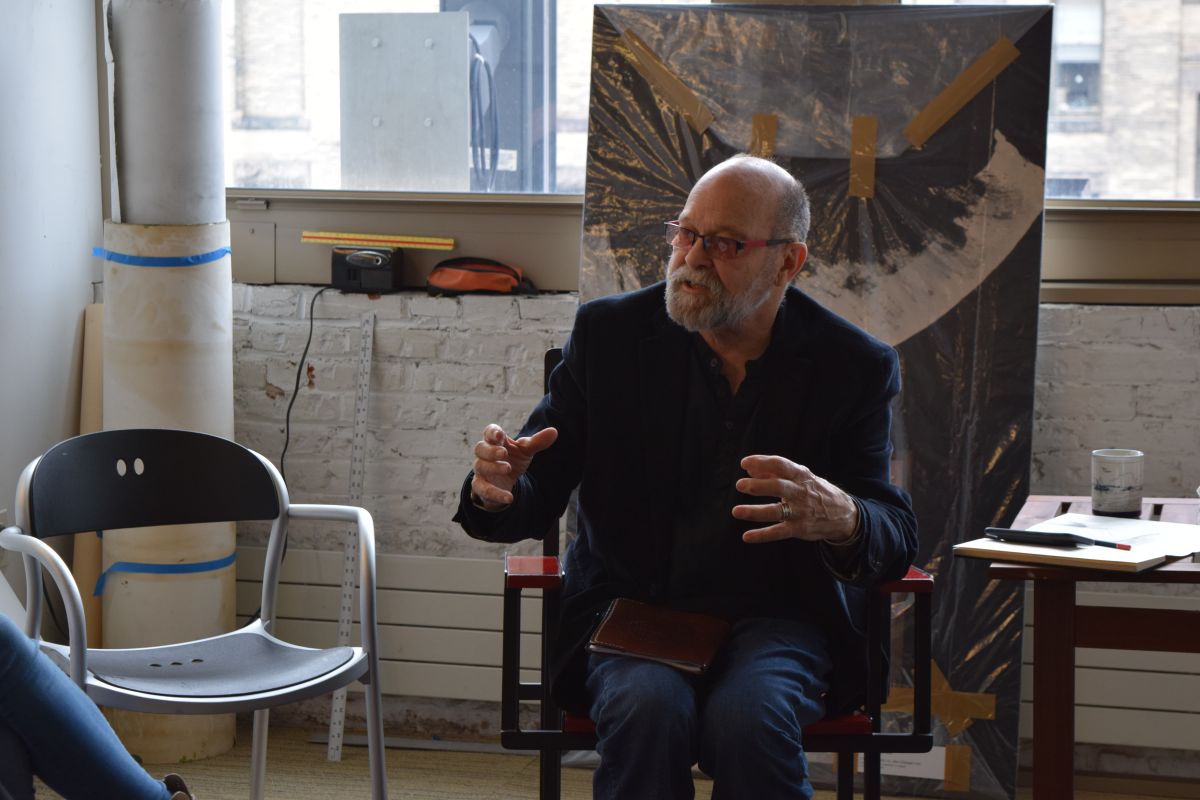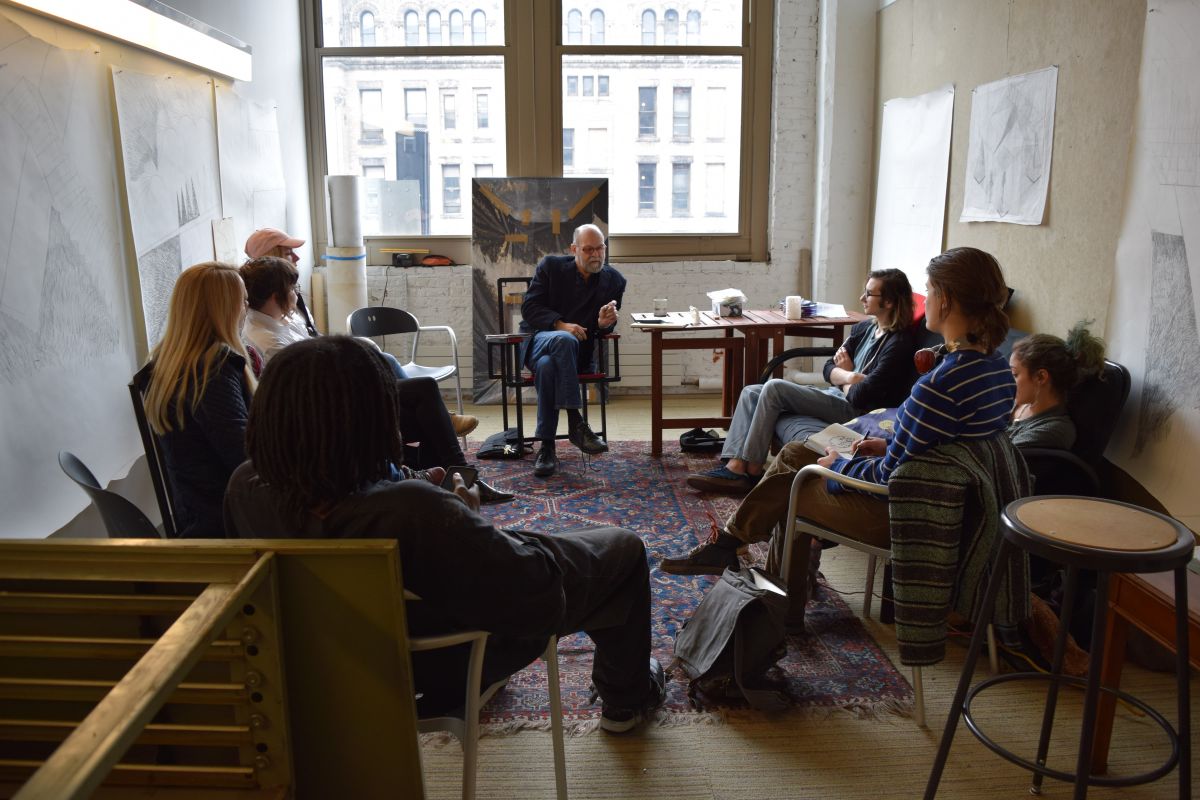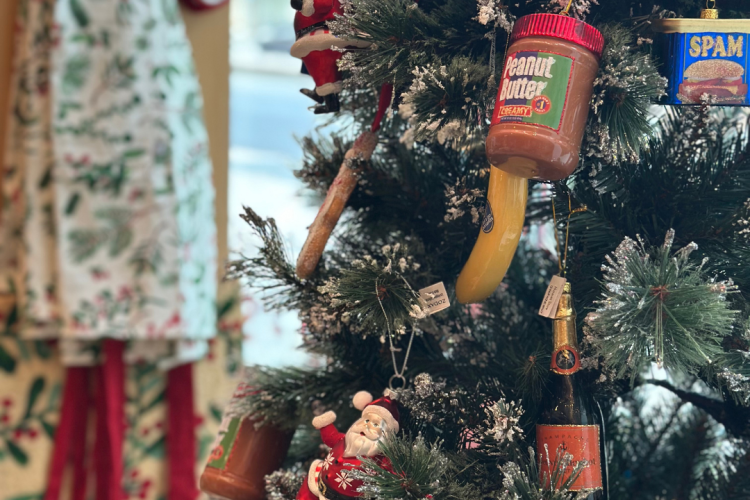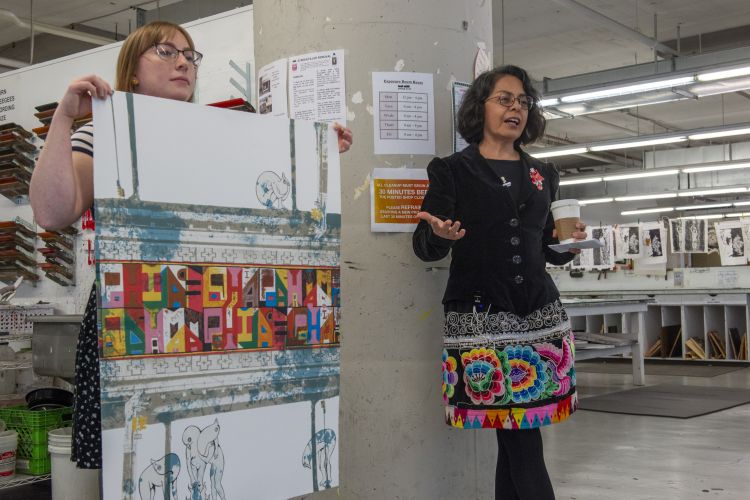STORIES FROM PAFA
Asking Artists to Take a Risk
Jump off a cliff.
Certainly, a drastic suggestion but artist and Sculpture department chair Rob Roesch says it’s the only way artists can find their way.
He isn’t asking students to line up and dive off into the nearest ocean but he wants them to bravely go into the unknown and find themselves and their future path.
“If you don’t jump, then you don’t ever know,” Roesch said. “One of the things I try to say when we meet each week in thesis seminar is: You gotta just jump off the cliff. You have to jump, and if you jump then somehow you get things taken care of.”
Roesch has taught sculpture at PAFA for 35 years. In his time at the academy, he’s seen the department grow, and he’s worked to give students the same experiences he’s had as an artist.
He piloted digital imaging classes when he realized his teaching didn’t match up with his own art practice.
“I would teach the students how to make drawings, working drawings and then I’d go home and work on the computer and it didn’t seem fair, so that’s how it started,” he said. “A friend gave me three of his old computers and we put it together, with two students on each computer to start.”
Helping young artists grow is a responsibility he doesn’t take lightly. While he considers himself a teacher, he doesn’t see his teaching style as traditional.
“I don’t know if I teach things, I basically take whatever I’ve learned in my life and bring it to them, that’s pretty much it,” he said
And he said lessons don’t only come from faculty like himself, that the lessons teach each other is just as important as what’s on a syllabus.
“I call the gang studio the kibbutz on Broad Street because they all have to get along and they do. That’s very important,” Roesch said. “And at lunchtime, they sit and make food together and sit on the couch in the hallway, and they pull chairs up to talk. I’m in the 3D print room and I’m listening to the conversation and you can’t buy that kind of learning, it’s just beautiful.”
He encourages his students to reflect on and examine their own lives and work as often as possible. Telling them that success does not always mean reaching the top tiers of the art world. Simply thriving and making a living is a success.
“I consider myself part of the army of artists and that’s what I try to teach my students, that before you know it you’re no longer emerging, you’re mid-career and you’ve done very well,” Roesch said. “You’ve lived high off of nickels and dimes and life is good.”
Life has been very good to Roesch. His work is in museum collections internationally. He has completed 20 major public art projects in the U.S., including the Gateway to Wichita, Kansas, a sited sculpture for Florida Gulf Coast University, and the entrance to Texas A&M.
Roesch was an invited artist in the 2007 and 2009 Biennials in Egypt. In 2008, as a guest of the Chinese government, he built a solar sculpture in Hangzhou, and in 2010 he completed Rainwall in Jiande. He also completed a commission of a large public sculpture for the G20 Summit in Hangzhou.
“I remember getting my first large commission and ire member it was a little like slaying a dragon and it's addictive, to find my work on Google Earth is awesome,” he said. “It’s insatiable, it’s like a drug, and you can’t get away from it.”
We're so excited you're planning to visit PAFA!
Make time for art — visit us Thursday to Sunday.
Before reserving your tickets, please review helpful information about museum hours, accessibility, building access, and special admission programs.
If you have any questions, feel free to reach out to us at visitorservices@pafa.org — we’d love to help!





